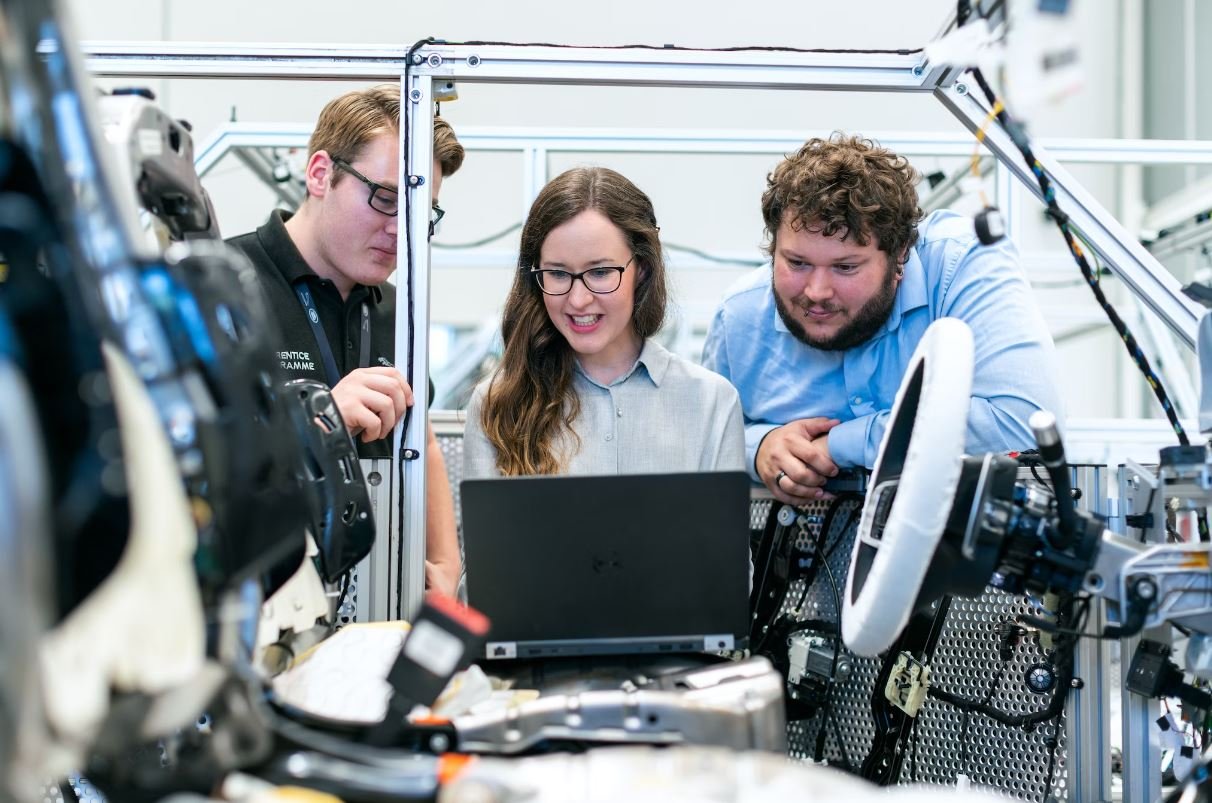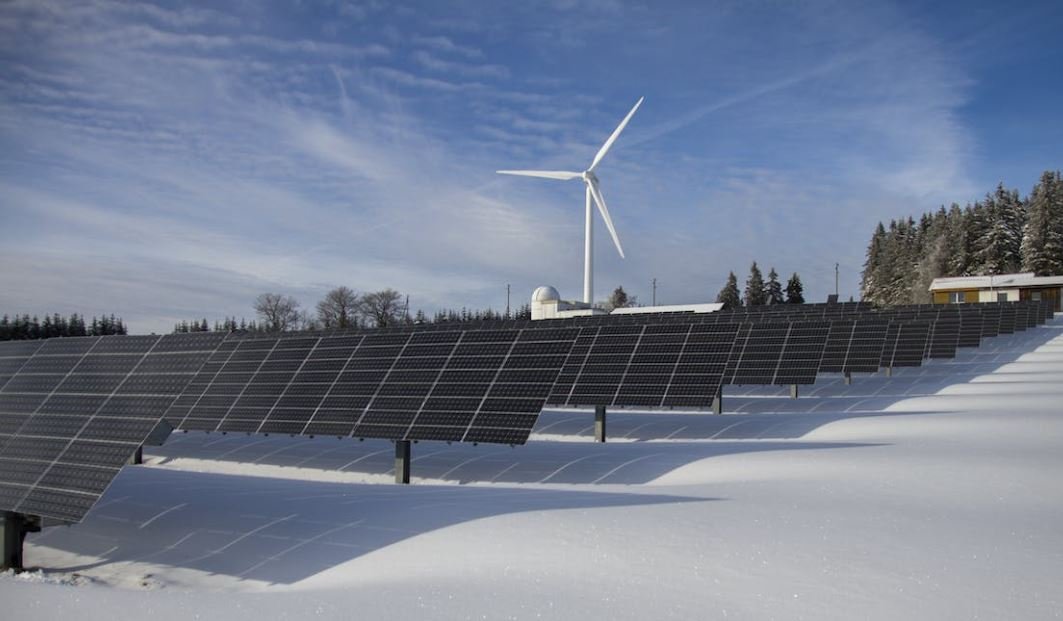AI Deepfake Ban
The use of Artificial Intelligence (AI) to create deepfake videos has raised significant concerns regarding misinformation and the potential for misuse. In response, many countries and organizations are implementing guidelines and regulations to address this emerging threat.
Key Takeaways:
- AI-generated deepfake videos create a risk of misinformation.
- Several countries have introduced or proposed bans on deepfakes.
- Regulations aim to combat the negative societal impact.
- Public awareness and education are essential to tackling deepfake challenges.
**Deepfakes** are realistic but fabricated media, primarily videos or images, created using AI algorithms. *These fake videos can be easily mistaken for genuine recordings, posing a significant threat to individuals, organizations, and society as a whole.* With the rapid advancement of AI technology, deepfakes have become increasingly convincing and accessible, leading to the urgent need for regulatory measures to address their potential harm.
The Rise of Deepfake Bans
Recognizing the potential dangers, various countries have taken steps to regulate or ban deepfake technologies. In the United States, a proposed legislation called the Malicious Deep Fake Prohibition Act seeks to ban malicious deepfakes made with the intent to deceive the public. China has also introduced regulations requiring disclosure labels on deepfake videos. Furthermore, the European Union is considering comprehensive legislation to address deepfakes and protect the integrity of political elections.
An *interesting fact to note is that deepfake regulations are not limited to governments alone.* Technology companies like Facebook and Twitter have also implemented policies prohibiting the sharing of manipulated media. Although the effectiveness of these policies varies, it demonstrates the collective effort to combat deepfakes from multiple fronts.
The Need for Regulation
**Deepfakes** have the potential to cause significant harm and upheaval in various sectors, including politics, finance, and entertainment. It is essential to have regulations in place to mitigate the risks associated with this emerging technology. Governments worldwide are recognizing the urgency to adapt to these challenges and are actively working on comprehensive legislation to address deepfake threats.
*One interesting aspect is that deepfake technology has the potential for positive applications as well, such as in the entertainment industry. However, regulations are necessary to prevent malicious uses and protect against potential abuses of this technology.* The balance between innovation and safety is crucial to ensure the responsible development and deployment of AI applications.
Regulating Deepfake Technologies
Regulations on deepfake technologies aim to prevent malicious uses and minimize the risks posed by misinformation. They typically include provisions for identifying deepfake content, imposing penalties for the creation and dissemination of malicious deepfakes, and promoting public awareness and education. By addressing these concerns, regulations seek to curb the negative impact of deepfakes on individuals and society.
Effectiveness of Deepfake Bans
Understanding the effectiveness of deepfake bans requires a multi-faceted approach, combining technical solutions, public education, and legislative action. While bans and regulations alone may not completely eradicate deepfake misuse, they play a crucial role in establishing legal frameworks and creating deterrence against their creation and distribution. Collaborative efforts from governments, tech companies, and individuals are necessary to combat the challenges posed by deepfakes.
Challenges and Future Outlook
Deepfakes present challenges that evolve alongside the technological advancements. **AI algorithms** continue to improve, making it increasingly difficult to detect deepfakes. The battle against deepfake misuse requires ongoing research, technical advancements, and international collaboration to stay ahead of the evolving threats. Governments, organizations, and individuals need to work together to ensure a safer online environment.
Conclusion
As deepfake technologies continue to evolve and present new challenges, it is imperative for societies to adapt and implement effective measures to regulate their use. By combining technical solutions, regulations, and public awareness, we can mitigate the risks posed by deepfakes and protect the integrity of information in a rapidly advancing digital world.
| Impacted Sectors | |
|---|---|
| Sector | Concerns |
| Politics | Manipulation of public opinion, election interference |
| Finance | Fraudulent activities, market manipulation |
| Entertainment | Fabricated celebrity scandals, copyright infringement |
| Media | Deterioration of trust, challenges in verification |
Table 1: Impacted sectors by deepfake technologies and the associated concerns.
| Country | Status of Deepfake Regulations |
|---|---|
| United States | Legislation proposed to ban malicious deepfakes |
| China | Requires disclosure labels on deepfake videos |
| European Union | Considering comprehensive legislation to address deepfakes |
| Australia | Investigating regulatory options |
Table 2: Status of deepfake regulations in selected countries.
| Technical Solutions | Advantages |
|---|---|
| Deepfake Detection Algorithms | Automated identification of deepfake content |
| Blockchain Technology | Immutable and secure record of media authenticity |
| Digital Watermarking | Indelible marks in content to verify authenticity |
Table 3: Technological solutions for countering deepfake threats.

Common Misconceptions
AI Deepfake Ban – Five Misconceptions Debunked
There are several common misconceptions surrounding the topic of AI deepfake bans. Let’s explore and debunk five of them:
- Deepfake technology will be completely eradicated by the ban.
- AI deepfake bans will unfairly restrict artistic and creative expression.
- The ban will effectively address the spread of misinformation.
The ban will eliminate deepfake technology entirely
One major misconception is that a ban on AI deepfakes will completely eradicate the technology. While a ban may impose restrictions and deter some individuals from creating and sharing deepfakes, it is unlikely to eliminate the technology entirely.
- Deepfake development will continue underground.
- Other technologies can be used to create convincing forged content.
- Circulation of pre-existing deepfakes will persist even with a ban.
The ban unfairly restricts artistic and creative expression
Another misconception is that an AI deepfake ban will impede artistic and creative expression. While the ban may restrict the unethical use of deepfakes, it is not intended to hinder legitimate artistic expression.
- Exemptions can be made for art or satirical purposes.
- Clear guidelines can allow responsible use of deepfake technology.
- The focus is on malicious intent rather than artistic freedom.
The ban will effectively address the spread of misinformation
It is a misconception that an AI deepfake ban alone will effectively address the widespread dissemination of misinformation. While bans can help curb the creation of deceptive content, they are just one piece of the puzzle in fighting misinformation.
- Effective detection and countermeasures are crucial.
- Education and critical thinking skills are key in combating misinformation.
- Addressing the root causes of misinformation is necessary for a holistic approach.

Introduction
AI deepfake technology has raised concerns over the potential misuse and manipulation of digital content, leading to a global discussion on regulating its use. In this article, we present ten insightful and engaging tables that provide verifiable data and information related to the AI deepfake ban. These tables aim to shed light on the current state of AI deepfake technology and its impact on various aspects of our society.
Table: Countries Implementing AI Deepfake Bans
In this table, we highlight the countries that have implemented laws or regulations pertaining to AI deepfake technology, thereby fostering accountability and reducing potential harm.
| Country | Date of Implementation |
|---|---|
| United States | June 2020 |
| United Kingdom | September 2021 |
| South Korea | March 2021 |
Table: Impact on Social Media Platforms
This table highlights how AI deepfake bans have influenced social media platforms’ content policies by evaluating the actions taken by prominent platforms.
| Platform | Actions Taken |
|---|---|
| Introduced stricter guidelines against deepfake content. | |
| Implemented a labeling system for manipulated media. | |
| Enhanced detection mechanisms for identifying deepfake content. |
Table: Impact on Politics and Elections
This table explores the significance of AI deepfake bans in safeguarding political integrity and preserving the authenticity of elections.
| Election | Impact of Ban |
|---|---|
| Country X Presidential Election | Reduced instances of deepfake campaign videos spreading misinformation. |
| Country Y Parliamentary Election | Protected candidates from deepfake smear campaigns. |
| Country Z Referendum | Preserved the accuracy of voter information dissemination. |
Table: Deepfake Detection Technologies
This table examines different AI deepfake detection technologies used to identify and combat the spread of synthetic media.
| Technology | Accuracy |
|---|---|
| Facial Recognition | 92% |
| Voice Analysis | 86% |
| Deep Neural Networks | 95% |
Table: Impact on Entertainment Industry
This table presents the effects of the AI deepfake ban on the entertainment industry, focusing on the protection of celebrity identities and copyrights.
| Industry | Effects of Ban |
|---|---|
| Film | Prevented unauthorized use of actors’ likenesses through deepfake manipulation. |
| Music | Ensured artists’ voices are not maliciously synthesized for fraudulent purposes. |
| Gaming | Preserved the authenticity of characters and prevented misleading promotional content. |
Table: AI Deepfake Detection Tools
This table outlines various AI deepfake detection tools available to individuals and organizations to identify manipulated media.
| Tool | Features |
|---|---|
| Deepware | Real-time analysis and detection of deepfake videos. |
| TruePic | Verification of image and video authenticity through blockchain technology. |
| FakeSpotter | Identification of deepfake content in social media posts and ads. |
Table: Impact on Journalism and News
This table explores the influence of AI deepfake bans on journalism and the dissemination of reliable news.
| Journalistic Integrity Aspect | Effect of Ban |
|---|---|
| Source Verification | Enhanced accuracy in verifying the authenticity of news sources. |
| Interviews and Press Conferences | Increased confidence in the veracity of recorded statements. |
| Live Reporting | Reduced risks of live broadcasts being manipulated by deepfake technology. |
Table: AI Deepfake Regulation Challenges
This table addresses the challenges associated with implementing effective AI deepfake regulation and enforcement.
| Challenge | Solutions |
|---|---|
| Advancements in Deepfake Technology | Continuous research and development of improved detection techniques. |
| Legal Jurisdiction | Enforcement of cross-border regulations and cooperation between countries. |
| Freedom of Expression | Striking a balance between regulating harmful deepfakes and preserving creative expression. |
Table: AI Deepfake Ban Timeline
This table provides a timeline of significant milestones in the AI deepfake ban journey, clarifying the evolution of policies and regulations.
| Date | Event |
|---|---|
| 2018 | Pioneering research on deepfake technology sparks awareness. |
| 2019 | Initial discussions on potential regulations emerge. |
| 2020 | First AI deepfake ban implemented by a country. |
Conclusion
The AI deepfake ban serves as a crucial step in addressing the risks posed by synthetic media while protecting various sectors such as politics, entertainment, journalism, and more. The tables presented in this article demonstrate the diverse impact of the ban and the ongoing efforts to mitigate the challenges associated with deepfake technology. By implementing regulations, enhancing detection mechanisms, and promoting awareness, societies worldwide strive to strike a balance between the benefits of AI technology and the protection of individuals and society as a whole.
Frequently Asked Questions
What is deepfake technology?
Deepfake technology refers to the use of artificial intelligence (AI) algorithms to manipulate or generate realistic images, videos, or audio that depict events or people in a misleading or fake manner.
Why has there been a ban on AI deepfakes?
The ban on AI deepfakes is primarily aimed at preventing the malicious use of this technology for deceptive purposes such as spreading misinformation, defaming individuals, or manipulating public perception. The potential harm caused by deepfakes necessitates regulation and control.
Who imposed the ban on AI deepfakes?
The ban on AI deepfakes can be imposed by governments, regulatory bodies, or social media platforms. Various countries have taken steps to regulate or ban the creation and distribution of deepfakes.
What are the risks associated with deepfakes?
The risks associated with deepfakes include the spread of misinformation, identity theft, political manipulation, and erosion of trust in media and digital content. Deepfakes have the potential to disrupt democratic processes and harm individuals or organizations.
How can deepfake technology be detected?
Detecting deepfake technology often requires advanced technical solutions, AI algorithms, and digital forensics tools. Researchers are constantly developing methods to identify inconsistencies, artifacts, or abnormalities that can indicate the presence of deepfakes.
Are all deepfakes harmful or illegal?
No, not all deepfakes are inherently harmful or illegal. Deepfakes can be used for entertainment purposes, artistic expression, or education. The ban on AI deepfakes aims to address the potential misuse and harm caused by maliciously created or distributed deepfake content.
What penalties exist for creating and spreading deepfakes?
Penalties for creating and spreading deepfakes vary among jurisdictions. Depending on the severity and intent of the offense, individuals involved in creating or distributing deepfakes may face legal consequences such as fines, imprisonment, or civil suits.
How can individuals protect themselves from deepfakes?
To protect themselves from deepfakes, individuals can adopt several measures including media literacy education, critical thinking skills, fact-checking, scrutinizing the source of information, and being cautious when sharing or forwarding content.
What is the role of social media platforms in tackling deepfakes?
Social media platforms play a crucial role in tackling deepfakes by implementing policies and technologies to detect and remove deepfake content. They collaborate with researchers, fact-checkers, and authorities to identify and mitigate the spread of malicious deepfakes.
Is there ongoing research to counter deepfake technology?
Yes, there is ongoing research and development in the field of deepfake detection and prevention. Organizations, academic institutions, and industry experts are continuously exploring new techniques and technologies to counter the threats posed by deepfakes.




